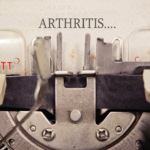“We need biomarkers that are more informative than CRP because we know that only 40–50% of patients with PsA have elevated CRP and many patients with very active disease have no elevation in this marker,” he said.
One biomarker for risk of psoriasis progressing to PsA is the chemokine CXCL-10. It has been found to be significantly elevated in patients who convert from psoriasis to PsA. But research has also shown that, once a diagnosis of PsA is made, CXCL-10 levels actually decline, even among those who haven’t received treatment yet. The mechanisms that underlie this decline are not well understood.4
“This is a chemokine we need to better understand and may be prove valuable in the identification of psoriasis patients at increased risk for arthritis,” he said.
Other markers being evaluated seem to have the potential to improve diagnostic accuracy of PsA. When added to CRP, two molecules—integrin beta 5 and Mac-2 binding protein—improve the ability to make a PsA diagnosis.5
Noncoding microRNAs are another area in PsA likely to increase in importance, Dr. Ritchlin said.6 This is particularly relevant, because it is now known that much of the genetic risk for immune inflammatory disorders is in the noncoding regions at the sites of enhancer and promoter activity.
“Thinking about the noncoding region of the genome is very important as well for serum biomarkers and this is an area that I think is going to receive a lot more attention,” he said.
All of these biomarker candidates need to further explored and validated in a rigorous manner before they can be used, he said.
“To develop these kinds of biomarkers requires a lot of validation and confirmation in different disease cohorts,” he said. “We don’t have that level of validation at this time for the markers discussed today, but we do have several biomarkers that can be formally evaluated in clinical trials and observational cohorts.”
Thomas R. Collins is a freelance writer living in South Florida.
References
- Badot V, Galant C, Nzeusseu Toukap A, et al. Gene expression profiling in the synovium identifies a predictive signature of absence of response to adalimumab therapy in rheumatoid arthritis. Arthritis Res Ther. 2009;11(2):R57.
- Ducreux J, Durez P, Galant C, et al. Global molecular effects of tocilizumab therapy in rheumatoid arthritis synovium. Arthritis Rheumatol. 2014 Jan;66(1):15–23.
- Yeremenko N, Noordenbos T, Cantaert T, et al. Disease-specific and inflammation-independent stromal alterations in spondylarthritis synovitis. Arthritis Rheum. 2013 Jan;65(1):174–185.
- Abji F, Pollock RA, Liang K, et al. Brief Report: CXCL10 is a possible biomarker for the development of psoriatic arthritis among patients with psoriasis. Arthritis Rheumatol. 2016 Dec;68(12):2911–2916.
- Cretu D, Gao L, Liang K, et al. Differentiating psoriatic arthritis from psoriasis without psoriatic arthritis using novel serum biomarkers. Arthritis Care Res (Hoboken). 2018 Mar;70(3):454–461.
- Ciancio G, Ferracin M, Saccenti E, et al. Characterisation of peripheral blood mononuclear cell microRNA in early onset psoriatic arthritis. Clin Exp Rheumatol. 2017 Jan–Feb;35(1):113–121.


